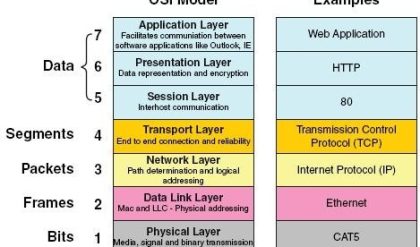
Zigbee communication is specially built for control and sensor networks on IEEE 802.15.4 standard for wireless personal area networks (WPANs), and it is the product from Zigbee alliance. This communication standard defines physical and Media Access Control (MAC) layers to handle many devices at low-data rates. These Zigbee’s WPANs operate at 868 MHz, 902-928MHz and 2.4 GHz frequencies. The date rate of 250 kbps is best suited for periodic as well as intermediate two way transmission of data between sensors and controllers.
Zigbee is low-cost and low-powered mesh network widely deployed for controlling and monitoring applications where it covers 10-100 meters within the range. This communication system is less expensive and simpler than the other proprietary short-range wireless sensor networks as Bluetooth and Wi-Fi.
Zigbee supports different network configurations for master to master or master to slave communications. And also, it can be operated in different modes as a result the battery power is conserved. Zigbee networks are extendable with the use of routers and allow many nodes to interconnect with each other for building a wider area network.

Zigbee Architecture

Zigbee system structure
Zigbee system structure consists of three different types of devices such as Zigbee coordinator, Router and End device. Every Zigbee network must consist of at least one coordinator which acts as a root and bridge of the network. The coordinator is responsible for handling and storing the information while performing receiving and transmitting data operations. Zigbee routers act as intermediary devices that permit data to pass to and fro through them to other devices. End devices have limited functionality to communicate with the parent nodes such that the battery power is saved as shown in the figure. The number of routers, coordinators and end devices depends on the type of network such as star, tree and mesh networks.
Zigbee protocol architecture consists of a stack of various layers where IEEE 802.15.4 is defined by physical and MAC layers while this protocol is completed by accumulating Zigbee’s own network and application layers.

Zigbee protocol architecture
Physical Layer: This layer does modulation and demodulation operations up on transmitting and receiving signals respectively. This layer’s frequency, date rate and number of channels are given below.

Physical Layer of Zigbee Protocol
MAC Layer: This layer is responsible for reliable transmission of data by accessing different networks with the carrier sense multiple access collision avoidance (CSMA). This also transmits the beacon frames for synchronizing communication.
Network Layer: This layer takes care of all network related operations such as network setup, end device connection and disconnection to network, routing, device configurations, etc.
Application Support Sub-Layer: This layer enables the services necessary for Zigbee device object and application objects to interface with the network layers for data managing services. This layer is responsible for matching two devices according to their services and needs.
Application Framework: It provides two types of data services as key value pair and generic message services. Generic message is a developer defined structure, whereas the key value pair is used for getting attributes within the application objects. ZDO provides an interface between application objects and APS layer in Zigbee devices. It is responsible for detecting, initiating and binding other devices to the network.
Zigbee Operating Modes and Its Topologies

Zigbee Communication Operation
Zigbee two way data is transferred in two modes: Non-beacon mode and Beacon mode. In a beacon mode, the coordinators and routers continuously monitor active state of incoming data hence more power is consumed. In this mode, the routers and coordinators do not sleep because at any time any node can wake up and communicate. However, it requires more power supply and its overall power consumption is low because most of the devices are in an inactive state for over long periods in the network.
In a beacon mode, when there is no data communication from end devices, then the routers and coordinators enter into sleep state. Periodically this coordinator wakes up and transmits the beacons to the routers in the network. These beacon networks are work for time slots which means, they operate when the communication needed results in lower duty cycles and longer battery usage. These beacon and non-beacon modes of Zigbee can manage periodic (sensors data), intermittent (Light switches) and repetitive data types.
Zigbee Topologies

Zigbee Topologies
Zigbee supports several network topologies; however, the most commonly used configurations are star, mesh and cluster tree topologies. Any topology consists of one or more coordinator. In a star topology, the network consists of one coordinator which is responsible for initiating and managing the devices over the network. All other devices are called end devices that directly communicate with coordinator. This is used in industries where all the end point devices are needed to communicate with the central controller, and this topology is simple and easy to deploy.
In mesh and tree topologies, the Zigbee network is extended with several routers where coordinator is responsible for staring them. These structures allow any device to communicate with any other adjacent node for providing redundancy to the data. If any node fails, the information is routed automatically to other device by these topologies. As the redundancy is the main factor in industries, hence mesh topology is mostly used. In a cluster-tree network, each cluster consists of a coordinator with leaf nodes, and these coordinators are connected to parent coordinator which initiates the entire network.
Due to the advantages of Zigbee technology like low cost and low power operating modes and its topologies, this short range communication technology is best suited for several applications compared to other proprietary communications, such as Bluetooth, Wi-Fi, etc. some of these comparisons such as range of Zigbee, standards, etc., are given below.

Comparison Table of Zigbee






Comments are closed.